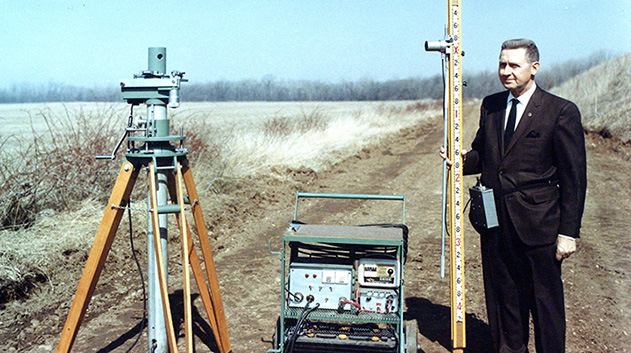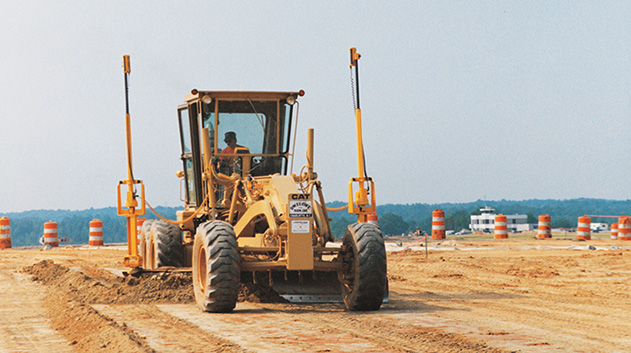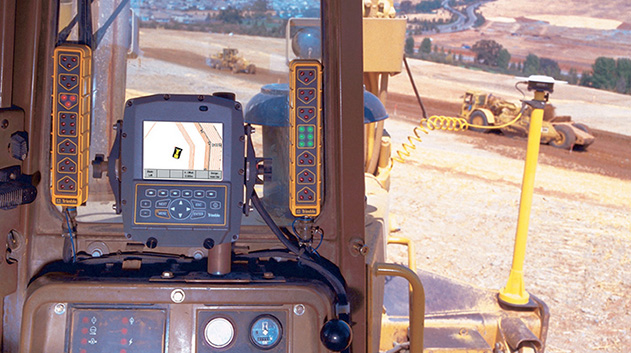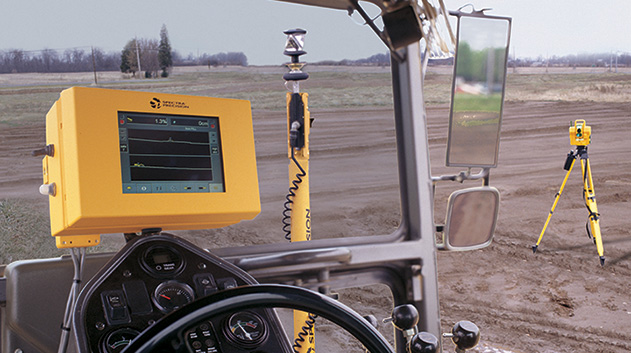What is Machine Control?
Machine control systems combine positioning sensors with computer displays to give operators better insight into and control over their work.
Enable operators to accurately position buckets, blades and other implements while eliminating the need for surveying, staking, and constantly checking work in progress.
Utilize labor and equipment efficiently to reduce costs and minimize wear-and-tear.
Improve connectivity between teams and disciplines by sharing model data and information on work performed.
PS grade control in civil construction and earthmoving
Trimble machine control helps to maximize project budgets by reducing errors, improving data collection, and reducing operator guesswork.

Agriculture equipment & autonomous technology
Precision guidance solutions enable farmers to improve crop yields, drive efficiencies and reduce environmental impact.

Trimble’s role in the evolution of machine control
The machine control we know today is the result of numerous technological advances, particularly in positioning.
Trimble, along with innovators in agriculture, geospatial, heavy equipment and academia, played an important role in driving those innovations forward.
Machine control milestones
1960s

Engineers James Fouss and Norman Fausey of the USDA ARS build the first laser grade control system.
Robert H. Studebaker invents a laser controlled motor grader with a rotating prism.
Studebaker and Ted L. Teach form Laserplane Corp, the first laser company.
ARS and Laserplane exhibit laser control for the first time on a trenching machine.
1970s-1980s

With the intro of sonic sensors, machine control expands to motor graders and pavers for elevation and steering.
The union of rotating lasers and sonic tracers births the first generation of 1D/2D machine control used for controlling elevation and steering.
The dual automatic blade control solution, called the BladePro System, emerges.
1990s

Robotic total stations and GPS advances lay the foundation for 3D machine control.
Trimble introduces the first RTK GPS receiver.
Trimble unveils BenchGuide, a GPS-based leveling system for mining applications.
Caterpillar and Trimble launch the Computer Aided Earthmoving System for bulldozers and excavators.
Steve Berglund of Spectra Precision explores 3D machine control using robotic total stations and GPS.
BladePro 3D uses a robotic total station and digital terrain model software to automatically control motor grader blade elevation and cross slope.
First commercial GPS machine control system launches on John Deere 750 dozer.
Trimble debuts its first stakeless GPS grade control system.
2000s

Trimble acquires Spectra Precision to grow its machine control portfolio with automated blade control with robotic total stations.
Caterpillar Trimble Control Technologies (CTCT) forms to develop machine control and guidance products for mining and construction.
The Trimble Earthworks Grade Control Platform is introduced, redefining ease of use, accuracy and productivity.
2020s

Trimble partners with Dynapac to develop commercial-ready soil rollers that include automated steering and speed functions.
Trimble introduces the industry’s first automatic steering control solution for dozers and soil compactors, Horizontal Steering Control.
Trimble introduces the first augmented reality system for excavators.
Unleashing new possibilities for the use of positioning technology
Renovating a runway without interrupting daily airport operations
To renovate a runway at Luxembourg Airport, construction teams needed to work overnight and reopen the runway every morning. Trimble machine control enabled them to successfully orchestrate their highly complex plan.
Modeling and building complex underground systems in difficult conditions
Buesing Corp. is a specialty contractor with a broad range of service offerings, from mass excavation to foundation drilling. Trimble machine control allows Buesing to perform complex operations in challenging site and soil conditions.


